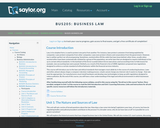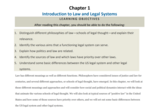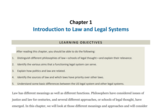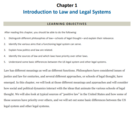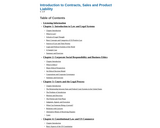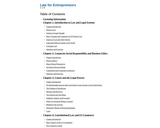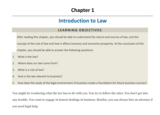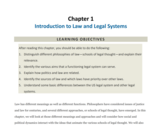
Law has different meanings as well as different functions. Philosophers have considered issues of justice and law for centuries, and several different approaches, or schools of legal thought, have emerged. In this chapter, we will look at those different meanings and approaches and will consider how social and political dynamics interact with the ideas that animate the various schools of legal thought. We will also look at typical sources of “positive law” in the United States and how some of those sources have priority over others, and we will set out some basic differences between the US legal system and other legal systems.
Table of Contents
Chapter 1: Introduction to Law and Legal Systems
Chapter 2: Corporate Social Responsibility and Business Ethics
Chapter 3: Courts and the Legal Process
Chapter 4: Constitutional Law and US Commerce
Chapter 5: Administrative Law
Chapter 6: Criminal Law
Chapter 7: Introduction to Tort Law
Chapter 8: Introduction to Sales and Leases
Chapter 9: Title and Risk of Loss
Chapter 10: Performance and Remedies
Chapter 11: Products Liability
Chapter 12: Bailments and the Storage, Shipment, and Leasing of Goods
Chapter 13: Nature and Form of Commercial Paper
Chapter 14: Negotiation of Commercial Paper
Chapter 15: Holder in Due Course and Defenses
Chapter 16: Liability and Discharge
Chapter 17: Legal Aspects of Banking
Chapter 18: Consumer Credit Transactions
Chapter 19: Secured Transactions and Suretyship
Chapter 20: Mortgages and Nonconsensual Liens
Chapter 21: Bankruptcy
Chapter 22: Introduction to Property: Personal Property and Fixtures
Chapter 23: Intellectual Property
Chapter 24: The Nature and Regulation of Real Estate and the Environment
Chapter 25: The Transfer of Real Estate by Sale
Chapter 26: Landlord and Tenant Law
Chapter 27: Estate Planning: Wills, Estates, and Trusts
Chapter 28: Insurance
- Subject:
- Business and Communication
- General Law
- Law
- Material Type:
- Textbook
- Provider:
- The Saylor Foundation
- Provider Set:
- Saylor Textbooks
- Author:
- Alyssa Martina
- Don Mayer
- George Siedel
- Jethro Lieberman
- Date Added:
- 04/24/2019


